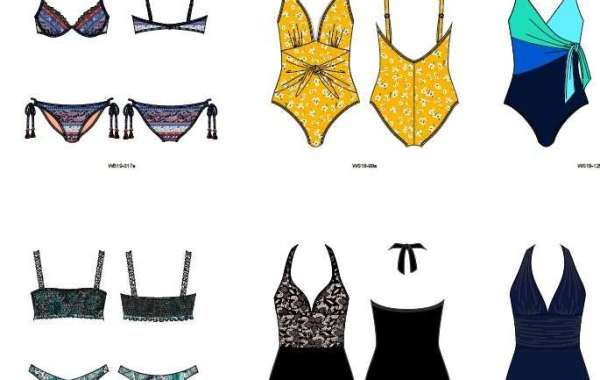Starting in the 1930s, women began to wear a two-piece bathing suit consisting of a bra and shorts. By the late 1940s, the popularity of the bikini took swimwear in a new direction. Modern swimwear surpasses the past in color, style and material, forming a new trend of multi-color, multi-style and high-quality swimwear.
The most commonly used swimsuit material
Lycra, polyamide and polyester are the most commonly used materials for swimwear. Any special materials such as space and flower can not be separated from the above three types of elastic characteristics. Many of the new swimsuits come with special treatments that are uv, chlorine or splash resistant. Lycra is a kind of artificial elastic fiber, the best elastic fabric, can extend to the original length of 4~6 times, excellent extension, it is suitable for blending with all kinds of fiber, can strengthen the texture sag, wrinkle resistance and other advantages. Chlorine-resistant Dupont Leica will allow swimsuits to last longer than those made from regular materials. Nylon fabric texture is not as solid as lycra fabric, but the elasticity and softness has been comparable with lycra. At present, it is the most commonly used fabric for swimwear, suitable for medium-priced products. Polyester fabric is one-way, two stretch elastic fabric. Due to limited elasticity, it is mostly used in swimming trunks or women's two-piece swimsuit, not suitable for one-figure swimsuit. Partial splicing or low unit price strategy for the application of fabric. Recyclable, environmentally friendly swimsuit fabrics are your best bet.
"Comfortable", "close-fitting" for the principle
The design of swimsuit takes "comfortable", "close-fitting" as one of the principles. The lining material mostly uses nylon, and the elasticity of the fabric needs to be the same, so as not to affect the comfort of consumers wearing. Therefore, when choosing to use auxiliary materials, "flexibility" is an absolutely necessary requirement. According to the trend of fashion, if the use of metal, acrylic, shell and other non-elastic accessories, the design needs to choose the location of the body does not affect the elasticity. When applied properly, auxiliary materials will have the perfect effect of making the finishing point. When choosing a swimsuit fabric, it is best to choose elastic fabric with 15% spandex or more, so that the swimsuit can be flexible with the body movement; When swimming in the swimming pool, we should pay attention to the adaptability of the fabric to the chlorine molecular content of the water in the swimming pool. The swimsuit made of the most popular three-dimensional elastic fabric in the world is the most suitable for low temperature water or swimming. Because the fabric is more hollow, it is easier to retain heat. Try to buy less or do not buy imitation of the so-called "import spandex high elastic fabric". First, the content of spandex in clothing fabric is generally about 15%-20%. Second, the resilience of imitation fabric is very poor after water because of composition variation.
Familiar with the swimsuit fabric, lining, accessories and other aspects of the knowledge, I believe that the choice of swimsuit and manufacturer will not be a difficult task for you.







